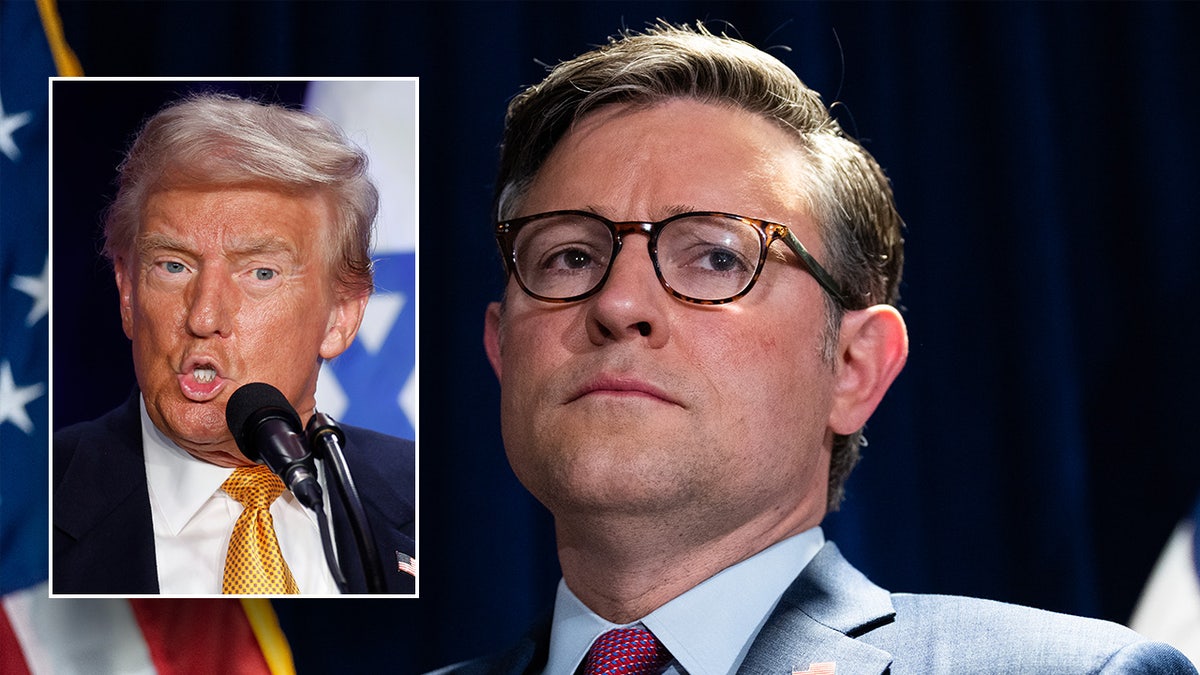Speaker Mike Johnson, R-La., is unveiling a new plan for avoiding a partial government shutdown on Sunday after a House GOP rebellion derailed a more conservative measure last week.
House leaders are aiming for a vote this week on a short-term extension of the current year’s government funding levels, called a continuing resolution (CR), to give congressional negotiators more time to hash out federal spending priorities for the new fiscal year beginning Oct. 1.
The new measure, closer in line with what Senate Democrats and the White House had called for than his first plan, is likely to spark fury among the ultra-conservative House Freedom Caucus and its allies. But most Republicans are wary of the backlash of a potential government shutdown just weeks before Election Day.
Johnson took a swipe at the upper chamber for failing to pass a single one of their 12 appropriations bills, writing to House GOP colleagues on Sunday that because “Senate Democrats failed to pass a single appropriations bill or negotiate with the House on an acceptable topline number for FY 2025, a continuing resolution is the only option that remains.”
JOHNSON’S PLAN TO AVOID GOVERNMENT SHUTDOWN GOES DOWN IN FLAMES AS REPUBLICANS REBEL

Speaker Mike Johnson released a new government funding plan that includes additional Secret Service funding after the attempts on former President Trump’s life. (Getty Images)
The plan would keep the government out of a partial shutdown through Dec. 20. House GOP leadership staff told reporters on Sunday that Democratic requests for additional dollars were rebuffed, and extra disaster relief funds that were in Johnson’s initial plan have been removed.
But it would include roughly an additional $187 million for the U.S. Secret Service (USSS), coupled with certain oversight measures, after a bipartisan push for more security following two foiled attempts on former President Trump’s life.
Perhaps the most significant change is the removal of the Safeguarding American Voter Eligibility (SAVE) Act, a bill requiring proof of citizenship in the voter registration process.
That legislation, backed by Trump, passed the House earlier this year with all Republicans and five Democrats in favor. Johnson hoped that attaching it to a CR would force the Democratic-controlled Senate and White House – both of which have called it a nonstarter – to consider it, or at least that it would serve as a potent opening salvo in negotiations.
CLUB FOR GROWTH POURS $5M INTO TIGHT HOUSE RACES AS GOP BRACES FOR TOUGH ELECTION
But 14 Republicans – most opposed to a CR on principle – tanked the bill last week.
Trump wrote on Truth Social ahead of the vote, “If Republicans don’t get the SAVE Act, and every ounce of it, they should not agree to a Continuing Resolution in any way, shape, or form.”
“Our legislation will be a very narrow, bare-bones CR including only the extensions that are absolutely necessary,” Johnson pledged to colleagues Sunday.
“While this is not the solution any of us prefer, it is the most prudent path forward under the present circumstances. As history has taught and current polling affirms, shutting the government down less than 40 days from a fateful election would be an act of political malpractice.”
Government funding has been one of the most volatile fights in the 118th Congress, pitting even the most conservative House allies against each other.
Johnson’s new plan is not likely to abate those tensions. Critics of a CR through December have argued it would leave them with no choice but to group their 12 annual appropriations bills into a massive “omnibus” spending bill, something nearly all Republican lawmakers oppose.
MCCARTHY’S ‘FINAL STRUGGLES’ THREATEN TO HAUNT JOHNSON’S GOVERNMENT SHUTDOWN FIGHT

Senate Majority Leader Chuck Schumer criticized Johnson’s original plan. (Reuters/Mike Segar)
But House GOP leadership staff suggested it was more likely Congress would pass another CR into the new year rather than set new levels for fiscal year 2025 – lining up with Johnson’s original plan.
The speaker’s previous proposal would have funded the government through March, something Democrats and some national security hawks opposed.
Trump allies, however, wanted to see the government funding fight kicked into the new year in hopes that he would win the White House and usher in a fully Republican Congress.
